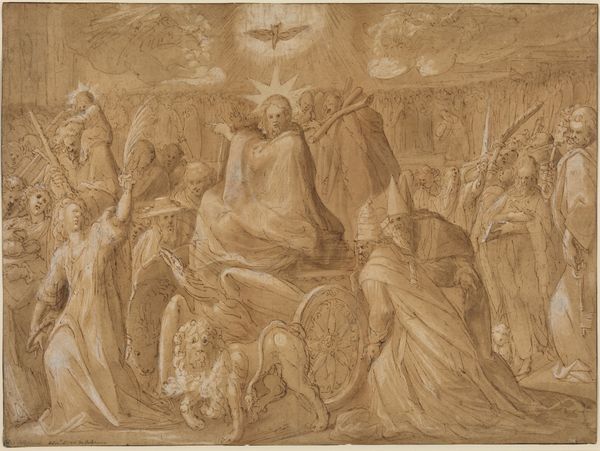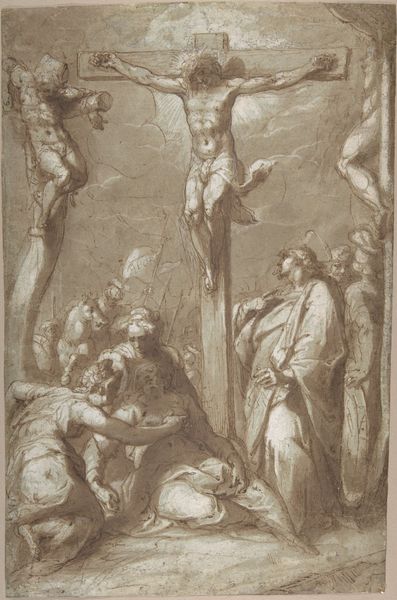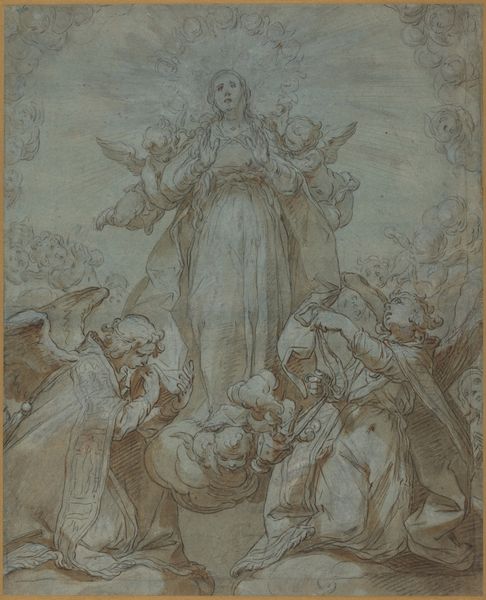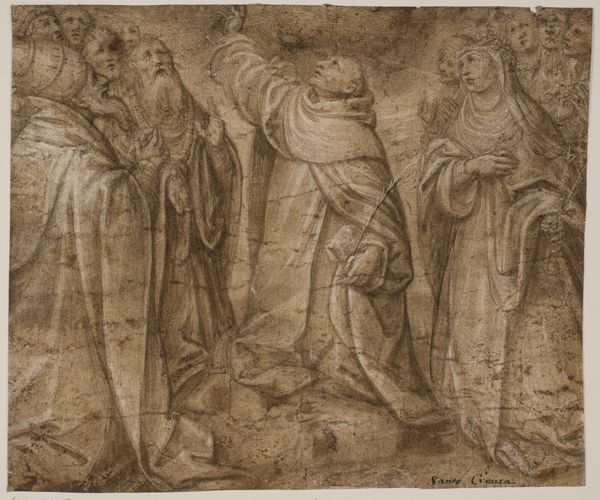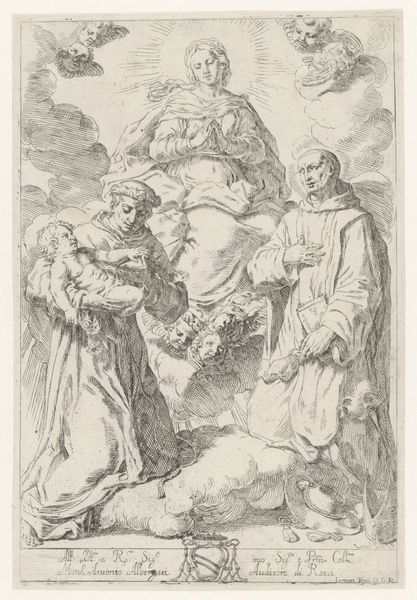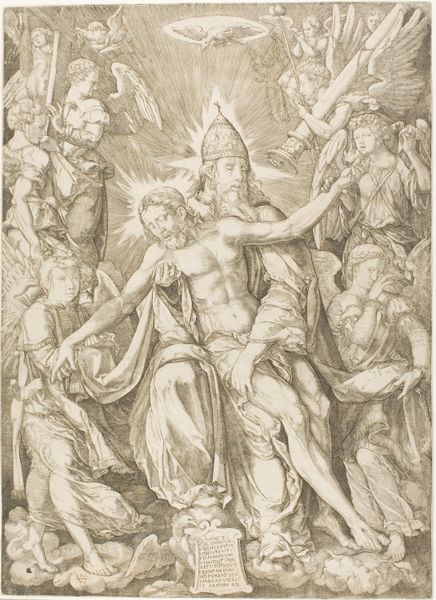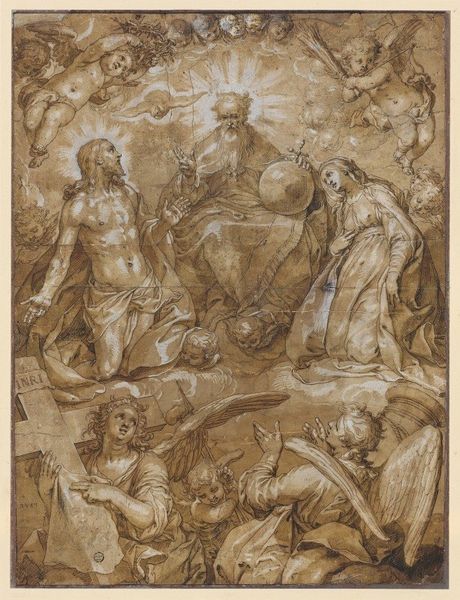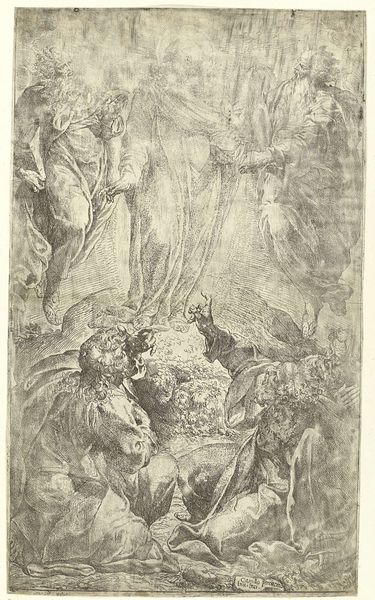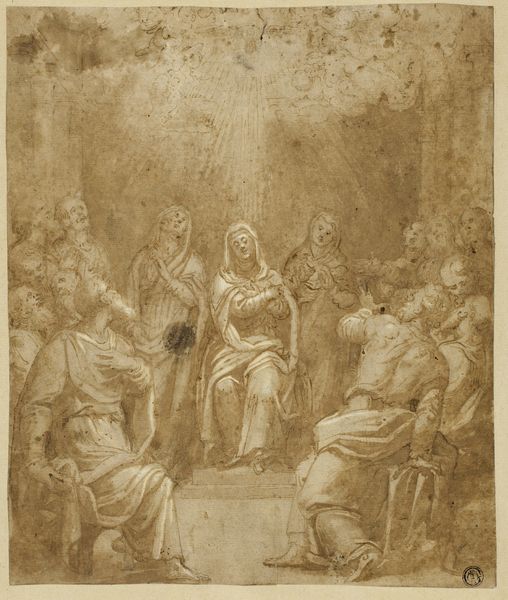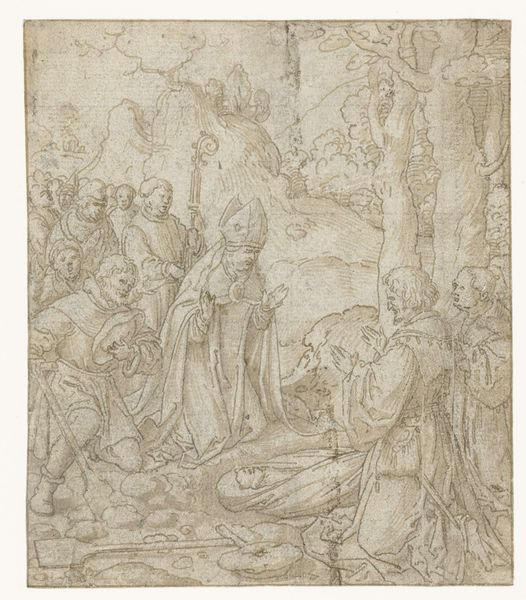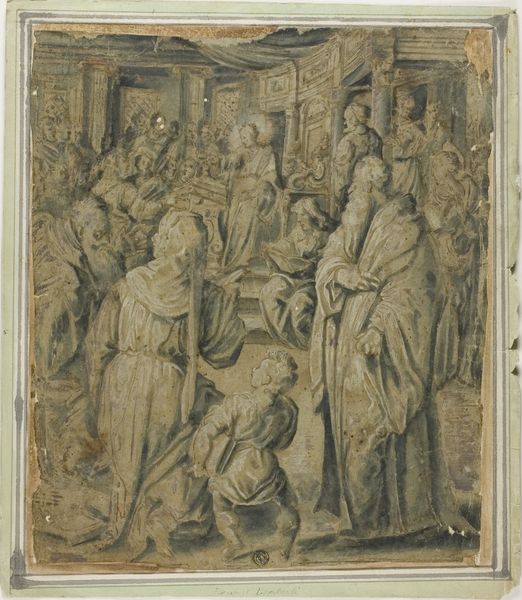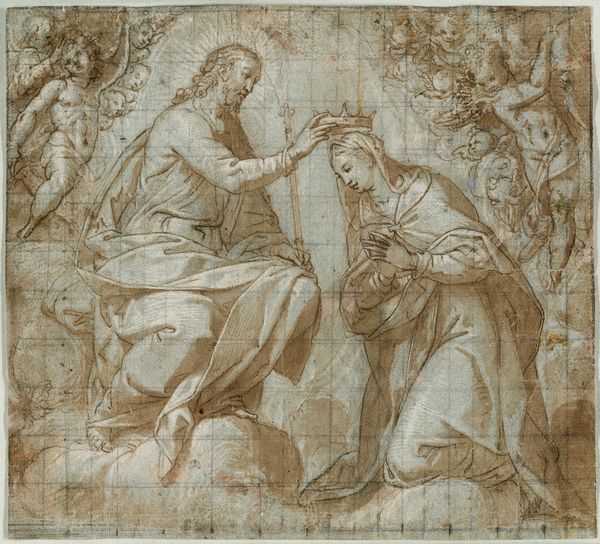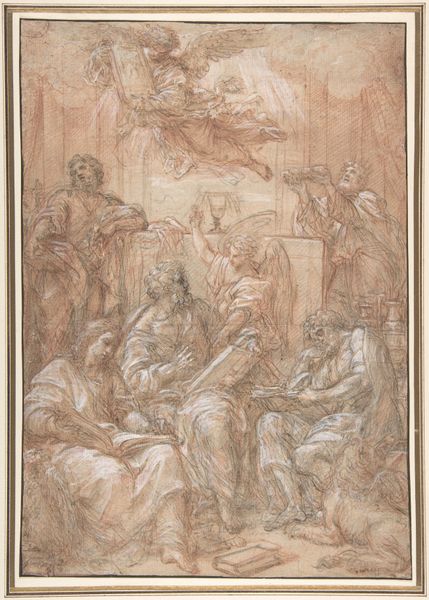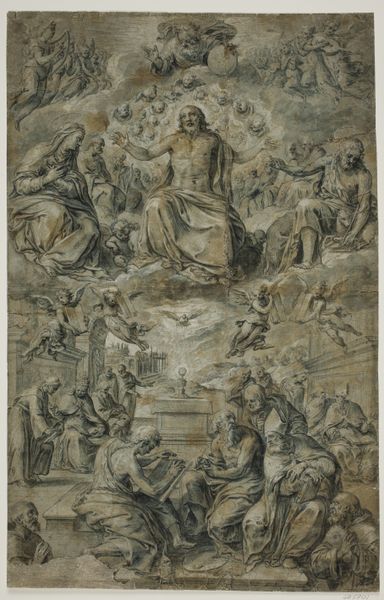
Christ and the Apostles (recto); Sketch of a Nativity Scene (verso) n.d.
0:00
0:00
drawing, paper, pencil, chalk, charcoal, black-chalk
#
drawing
#
narrative-art
#
charcoal drawing
#
figuration
#
paper
#
11_renaissance
#
pencil
#
chalk
#
charcoal
#
history-painting
#
black-chalk
Dimensions: 250 × 195 mm
Copyright: Public Domain
Editor: Here we have an undated drawing entitled "Christ and the Apostles (recto); Sketch of a Nativity Scene (verso)" by an anonymous artist, at the Art Institute of Chicago. It’s made using charcoal, chalk and pencil on paper. The subdued tones and the grouping of figures give it a contemplative, almost solemn feel. What catches your eye in this piece? Curator: Immediately, the structural arrangement commands attention. Observe the pyramidal composition, a stable form that lends the scene a sense of classical order. The central figure of Christ, radiating light, forms the apex, grounding the assembly of apostles. How does the artist’s use of line contribute to the overall effect? Editor: The lines seem quite delicate, almost tentative. There’s not a lot of heavy shading, giving it an airy quality, even though it's a serious subject. Curator: Precisely. Notice the varied weights of the lines—thicker to define form, thinner to suggest shadow and depth. The artist deftly manipulates these elements to create a dynamic surface, engaging the viewer's eye. Do you perceive any specific ways in which the artist's technical skills reinforce the narrative? Editor: I think the faces and hands have a kind of dramatic expressiveness. And is that intentional? Because some elements look deliberately unfinished, sketched, especially in the background, so it brings your focus sharply to Christ. Curator: Indeed, that contrast draws us in. That selective application of detail guides the eye and establishes a visual hierarchy. Have you considered the way the verso informs our understanding of the recto? Editor: I hadn’t made that connection, but knowing the sketch of the Nativity Scene is on the back changes how I think about it. It's no longer one single scene but part of the artist's creative practice, linking ideas across time. Curator: Precisely, viewing art in such holistic structural context will give rewarding insights. Editor: This formalist analysis provides valuable strategies for art appreciation.
Comments
No comments
Be the first to comment and join the conversation on the ultimate creative platform.
